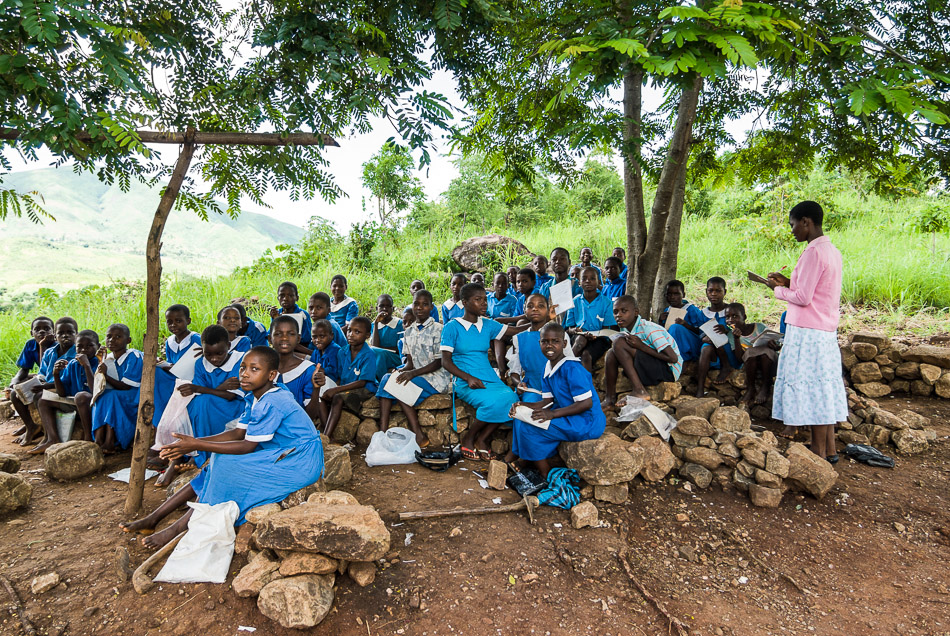February 10, 2012
Beyond the central hospitals and district facilities of Malawi, there are “Healthy Centers.” These rural outposts serve thousands in extraordinarily resource-challenged settings. Yesterday’s visit to Migowi was to a Healthy Center, where just a handful of nurses and staff are the only healthcare providers available for a catchment area of hundreds of square kilometers.
This morning, surprisingly well-paved roads take us 20km southwest of Blantyre, where we arrive at the village of Mpemba. Rhoda, the Deputy District Health Officer, explains how Mpemba is one of the larger Healthy Centers in the region, as it has nutrition programs and an actual maternity ward. It’s a full day’s walk for some of the people of the region to reach Mpemba, but the benches are full of breastfeeding mothers, patiently waiting with their infants. Patients’ family members dot the courtyards and children play soccer on the grass. Workers with concrete trowels and wooden forms and buckets of concrete mix are constructing staff housing close to the road. It’s hot. I’ve soaked my shirt after a tour of just three buildings. Rhoda is completely unfazed.
Yet for as rural as Mpemba is, we climb back into the truck and keep going. The pavement disappeared a while back, but leaving the Healthy Center is where things really change: Huge holes filled with water. Basketball-sized rocks along a path bearing only a minor resemblance to a road. We bounce through the lush green, on a path so narrow that tree branches scrape the truck. A steep downhill forces our driver to ease us forward, crawling towards the bottom, where we cross a flowing river and up the opposite bank. The wheels spin, searching for traction in the muck of the bank, until the rubber catches enough rock to lurch forward and up the hill. At several points, we need to stop, reverse and then build up speed to take a running start at a hill.
A half hour (but only 9km) later, we stop at the bottom of a hill. The road ends and opens onto a clearing, a big tree directly ahead. “Here it is: the tree,” says Rhoda. At its base are a few dozen kids, all dressed in blue and white uniforms. I ask her the name of this spot. She shrugs and says “Beyond Mpemba.”
I ask her the name of this spot. She shrugs and says “Beyond Mpemba.”
There is nearly nothing here but the tree. As I turn full circle, I can see only three brick buildings. But so significant is this tree, that classes are being held underneath it, and under other nearby trees. And school is in session. The biggest visible building is a simple rectangle with what looks to be two large rooms, just up the hill at the side of the clearing. Rhoda tells me it is a school, but for older children.
On the second Tuesday of every month, health workers from the Mpemba Healthy Center set out as part of a mobile outreach clinic and come here, under the tree, to provide healthcare for the region. If it’s raining, the clinic is held under the overhang of the school. Vaccines will be administered, ailments diagnosed and (hopefully) treated, medicines applied, growth monitoring and nutrition services will be provided, and even psychiatric and antenatal care. And then school will resume.

This is the very definition of rural. There is no electricity. There is a single water pump, anchored to a concrete pad beside the tree. And all the kids wave energetically, their faces lit with smiles. One of the area’s leaders produces a visitor’s book for us to sign. A few months ago, there were two Scottish missionaries here. I wonder why – what they did, what they left, if they helped. Rhoda is required to write her name and information. Even she is a visitor to this isolated place.
Back in the truck, in my backpack I have a colouring book. I had brought it to show the spokesman from the Ministry of Health this morning, but didn’t get a chance before he left, so it came with me. This is a coloring book developed by IVAC, as a fun way to inform children and their parents about pneumonia prevention, diagnosis and treatment. The expert-reviewed story has all kinds of animal characters going to the doctor, watching for fast breathing, remembering to wash their hands, and all sorts of other information that is both useful and interactive. In places where healthcare resources are so sparse, even the watchful eyes of children for the signs and symptoms of pneumonia in their younger siblings can be helpful. Just a few hours of delay in seeking care for a pneumococcal infection can sometimes mean the difference between life and death.
I tell Rhoda about the book and ask if the class would want it. The teacher’s eyes widen. I run to the truck to get the book. He is thrilled. I ask if they would want more – I have another dozen at my hotel, and can have more brought over with my colleague who is flying in on Sunday. We can bring them when we return for Tuesday’s monthly health clinic under the tree. “Wow, yes, we would be most grateful!” The teacher is practically bouncing. “Coloring really helps kids to learn,” says Rhoda, with a sincerity that reflects the many challenges for resources in Malawi. The teacher asks “And could you bring crayons?”




